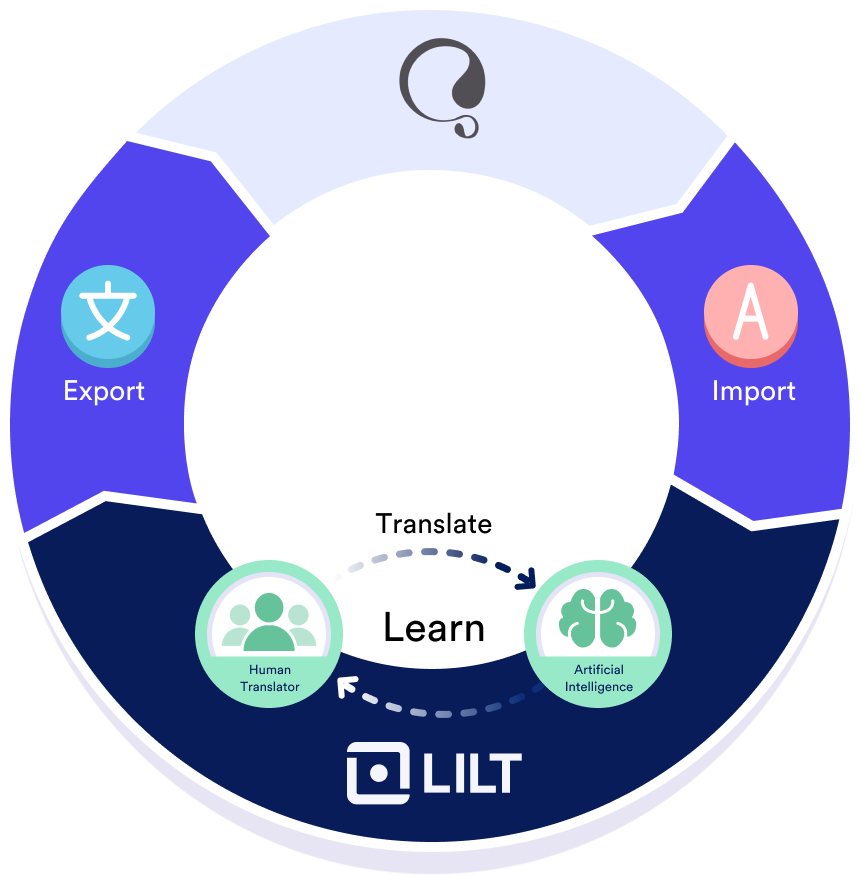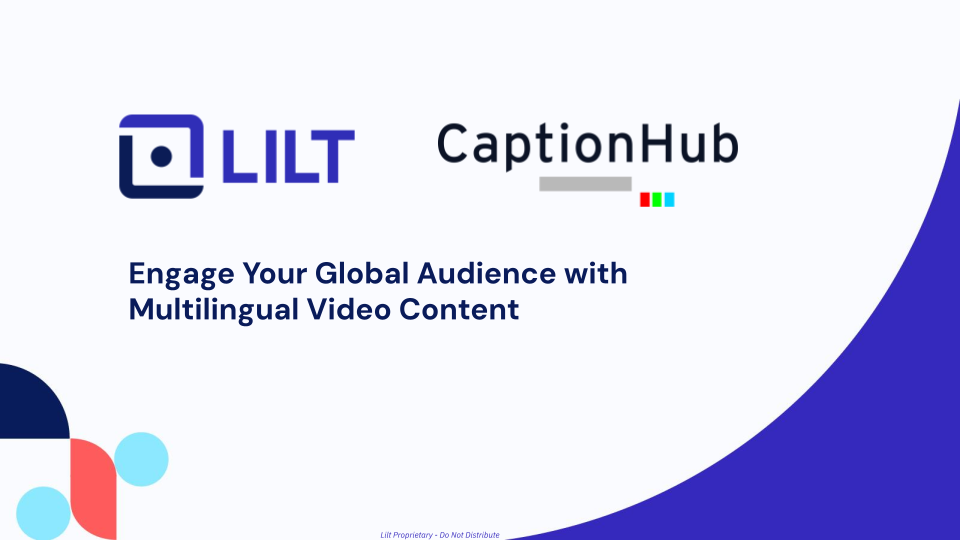Speed Up Your Multilingual Video Subtitling: Webinar Recap

The increasingly important role of multimedia content in digital customer experiences has spurred the rapid growth of enterprise video content generation. As a result, optimizing multilingual multimedia workflows has never been more crucial, as content creation teams are tasked with translating high volumes of multimedia content, often with quick turnaround times.
In our recent joint webinar with LILT partner CaptionHub, LILT Product Manager Vignesh Rajendran and CaptionHub’s CCO James Jameson explore the ways that employing an AI strategy enables global organizations to accelerate and amplify multimedia localization and provide an in-depth look at the LILT-CaptionHub Connector.
Whether you watch the 30-minute recording of this session or read the recap below, you can expect to walk away with a clearer understanding of the ways that global enterprises can benefit from an AI-powered multilingual subtitling strategy.
Takeaway 1: AI provides a path for multilingual subtitles at massive scale with lightning-fast turnaround times
“The only way to translate video content this quickly, cost-effectively, and at scale is via AI.”
Vignesh Rajendran 
Product Manager at LILT
Global content creators face a complex challenge – how to achieve scale in multilingual video content within established quality standards, quarterly budgets, and tight go-to-market and event timelines. With AI, the modern enterprise does not have to sacrifice in any of these crucial areas. Rajendran shared the successes of a LILT-CaptionHub global technology customer, who was able to generate subtitled video content for two key global industry events in 7 dialects. With the benefits of Contextual AI technology, the customer was able to translate 100 hours of content with a quality guarantee and turnaround times as quick as 24 hours.
Takeaway 2: Translating multimedia content is multifaceted, but it does not have to be overly complicated.
“Translating multimedia content adds the complication of time to translation. [LILT and CaptionHub] technologies come together seamlessly to allow us to solve a number of these problems for our customers.”
James Jameson 
Chief Commercial Officer at CaptionHub
Localizing multimedia content requires new considerations beyond what is required from written content types. Adding a time dimension to localization adds new technical requirements that written content does not. Subtitled multimedia video content also needs to consider character limits, on-screen text, voiceovers, and multiple speakers. Through the LILT-CaptionHub Connector, CaptionHub sends captions to LILT frame-by-frame for translation. Within the LILT Contextual AI Platform, LILT combines the phrases to give complete context to linguists. LILT is then able to deliver the translated captions back to CaptionHub to ultimately deliver seamless frame-accurate captions in a smooth end-to-end process.
Takeaway 3: Localization is a key use case where your organization can deploy an AI strategy today
“In the past ten years, there has not been a single word translated by LILT that has not gone through our Contextual AI Platform”
Vignesh Rajendran 
Product Manager at LILT
LILT and CaptionHub have been paving the path for AI workflows in the localization industry for nearly a decade. The LILT-CaptionHub Connector delivers an AI workflow that is “tried and tested” with several global customers successfully deploying this technology workflow.
As content teams are increasingly tasked to effectively incorporate AI, multimedia content localization is a key business workflow that can instantly benefit from the efficiencies of AI. The LILT-CaptionHub Connector offers a fully secure, immediately deployable solution as part of a corporate AI strategy.
To learn more about how CaptionHub and LILT's integrated services can handle large volumes of video content, automate processes, and improve the accuracy of translations over time, watch our full webinar on demand.
To learn more about subtitling best practices and the way that AI is transforming multimedia localization, download our recently published Starter Guide to Subtitling.


